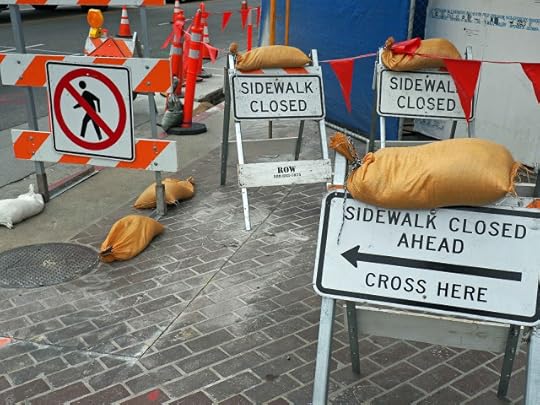Geoff Nicholson's Blog, page 45
June 2, 2017
THE TAO OF MEANDERING
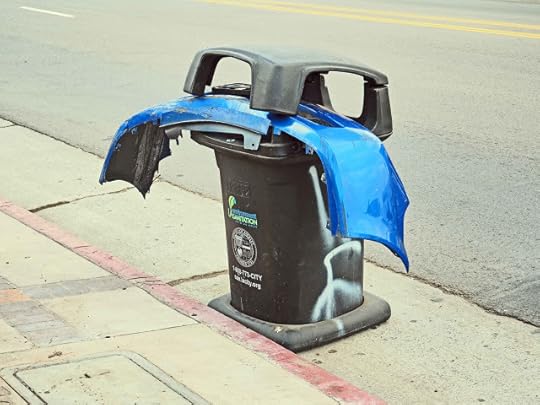
Those of us who walk, and like to consider the meaning of walking, tend to believe that a walk is something special. We like to think a walk can be a source of inspiration, a form of meditation, a sacrament, a journey of discovery both of the world and the self. And of course it can be, and often is, all those things.

But sometimes it’s not. Sometimes it’s just a walk.

And of course it ought to be possible to walk without thinking, without writing about it after the event, without blogging about it, without taking photographs en route and downloading them when you get home. But you know, we’re all creatures of habit, and sometimes “just walking” is much harder than it sounds, perhaps much harder than it ought to be.

Sure, you don’t want to get into a rut, but when walking has becomes a means of looking, observing, recording, and also I suppose, metaphorically, a form of hunting and gathering, it becomes hard “just” to go for a walk. Maybe that’s OK after all, and even if it’s not I’m not sure we can do much about it. We are how we walk: we walk how we are.

Here are some things I saw and snapped on some recent walks within the borders of Hollywood. They don’t add up to a source of inspiration, or a form of meditation, a sacrament, or a journey of discovery both of the world and the self. But we’re just going to have to live with that.


Published on June 02, 2017 15:08
May 30, 2017
WALKING IN RINGS
Sometimes I discover walking stuff for myself. Sometimes people send me things.I discovered, more or less under my own steam, that Wilkie Collins’ The Woman In White contains a whole lot of walking (no doubt most of the world knew this already) - 197 usages of the word walk and its variants in the book, along with stroll, and the occasional ramble, step, march and stride, and so on.
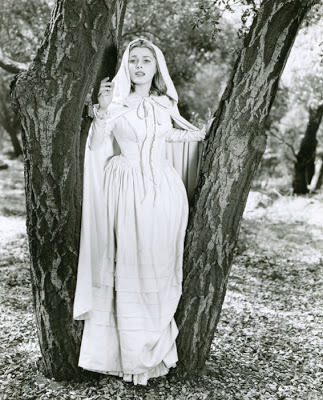
Here’s some crucial early walking in the novel: “I had now arrived at that particular point of my walk where four roads met—the road to Hampstead, along which I had returned, the road to Finchley, the road to West End, and the road back to London. I had mechanically turned in this latter direction, and was strolling along the lonely high-road … when, in one moment, every drop of blood in my body was brought to a stop by the touch of a hand laid lightly and suddenly on my shoulder from behind me.“I turned on the instant, with my fingers tightening round the handle of my stick. “There, in the middle of the broad bright high-road—there, as if it had that moment sprung out of the earth or dropped from the heaven—stood the figure of a solitary Woman, dressed from head to foot in white garments, her face bent in grave inquiry on mine, her hand pointing to the dark cloud over London, as I faced her …“‘Is that the road to London?’ she said.”

What I didn’t know, till I read it in the New York Review of Books, is that Wilkie Collins and Charles Dickens walked together at a certain time in their lives. They co-wrote what became The Lazy Tour of Two Idle Apprentices, based on a walking tour they did in the north of England. “These two had sent their personal baggage on by train: only retaining each a knapsack. Idle (that’s the overdeterministic name of one of the apprentcies) now applied himself to constantly regretting the train, to tracking it through the intricacies of Bradshaw's Guide, and finding out where it is now - and where now - and where now - and to asking what was the use of walking, when you could ride at such a pace as that. Was it to see the country? If that was the object, look at it out of the carriage windows. There was a great deal more of it to be seen there than here. Besides, who wanted to see the country? Nobody. And again, whoever did walk? Nobody. Fellows set off to walk, but they never did it. They came back and said they did, but they didn't. Then why should he walk? He wouldn't walk. He swore it by this milestone!”
Things cooled between the two men after Collins’ brother Charley “walked down the aisle” with Dickens’ daughter Kate. It was not a marriage made in heaven, apparently.*
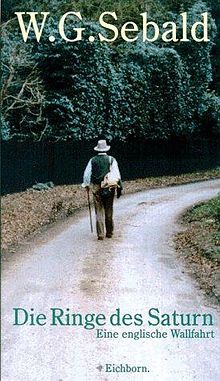
And then fellow walking scribe Anthony Miller sent me a quotation from Robert Mcfarlane that appears in the 2012 documentary titled Patience (After Sebald) directed by Grant Gee, Macfarlane says, "The British tradition is of walking as recovery and the American tradition is of walking as discovery. That striding forms into the oncoming air of the world, for the Romantic tradition, the British Romantic tradition, is a way to strip away the accretions of civilization, the hawking and hammering of time lived in cities and returning yourself to some original state, I mean, that's Rousseau: It's European as well as it's British. “But the American tradition, it's there in the road movie, it's there in the sense that we travel to liberate ourselves, to discover new ways of being, to acquire whole new methods of life that may themselves turn into habits but don't begin as them."
I keep wondering if this is even remotely true. First of all I wonder if I understand what he means by “recovery.” Recovery in the sense of getting better again? As a remedy for illness? Well maybe, but that seems to be no less British than American – look no further than Cheryl Strayed.

Or does he mean recovery in the sense of repossession or reclamation? In a literal or metaphoric sense? Surely only the latter. You can’t stake a physical claim on the landscape of, say, East Anglia, but you can certainly, metaphorically “make (or remake) it yours.” As for American walking being a means to discover “new ways of being;” well what’s so American about that? Isn’t that what the Wordworths and De Quincey and all the rest were trying to do?

Still, maybe we shouldn’t hold MacFarlane to this opinion too firmly. We all say dubious things when a microphone’s put in front of us.



Here’s some crucial early walking in the novel: “I had now arrived at that particular point of my walk where four roads met—the road to Hampstead, along which I had returned, the road to Finchley, the road to West End, and the road back to London. I had mechanically turned in this latter direction, and was strolling along the lonely high-road … when, in one moment, every drop of blood in my body was brought to a stop by the touch of a hand laid lightly and suddenly on my shoulder from behind me.“I turned on the instant, with my fingers tightening round the handle of my stick. “There, in the middle of the broad bright high-road—there, as if it had that moment sprung out of the earth or dropped from the heaven—stood the figure of a solitary Woman, dressed from head to foot in white garments, her face bent in grave inquiry on mine, her hand pointing to the dark cloud over London, as I faced her …“‘Is that the road to London?’ she said.”

What I didn’t know, till I read it in the New York Review of Books, is that Wilkie Collins and Charles Dickens walked together at a certain time in their lives. They co-wrote what became The Lazy Tour of Two Idle Apprentices, based on a walking tour they did in the north of England. “These two had sent their personal baggage on by train: only retaining each a knapsack. Idle (that’s the overdeterministic name of one of the apprentcies) now applied himself to constantly regretting the train, to tracking it through the intricacies of Bradshaw's Guide, and finding out where it is now - and where now - and where now - and to asking what was the use of walking, when you could ride at such a pace as that. Was it to see the country? If that was the object, look at it out of the carriage windows. There was a great deal more of it to be seen there than here. Besides, who wanted to see the country? Nobody. And again, whoever did walk? Nobody. Fellows set off to walk, but they never did it. They came back and said they did, but they didn't. Then why should he walk? He wouldn't walk. He swore it by this milestone!”
Things cooled between the two men after Collins’ brother Charley “walked down the aisle” with Dickens’ daughter Kate. It was not a marriage made in heaven, apparently.*

And then fellow walking scribe Anthony Miller sent me a quotation from Robert Mcfarlane that appears in the 2012 documentary titled Patience (After Sebald) directed by Grant Gee, Macfarlane says, "The British tradition is of walking as recovery and the American tradition is of walking as discovery. That striding forms into the oncoming air of the world, for the Romantic tradition, the British Romantic tradition, is a way to strip away the accretions of civilization, the hawking and hammering of time lived in cities and returning yourself to some original state, I mean, that's Rousseau: It's European as well as it's British. “But the American tradition, it's there in the road movie, it's there in the sense that we travel to liberate ourselves, to discover new ways of being, to acquire whole new methods of life that may themselves turn into habits but don't begin as them."
I keep wondering if this is even remotely true. First of all I wonder if I understand what he means by “recovery.” Recovery in the sense of getting better again? As a remedy for illness? Well maybe, but that seems to be no less British than American – look no further than Cheryl Strayed.

Or does he mean recovery in the sense of repossession or reclamation? In a literal or metaphoric sense? Surely only the latter. You can’t stake a physical claim on the landscape of, say, East Anglia, but you can certainly, metaphorically “make (or remake) it yours.” As for American walking being a means to discover “new ways of being;” well what’s so American about that? Isn’t that what the Wordworths and De Quincey and all the rest were trying to do?

Still, maybe we shouldn’t hold MacFarlane to this opinion too firmly. We all say dubious things when a microphone’s put in front of us.


Published on May 30, 2017 10:25
May 21, 2017
WALKING IN PULP
Those vintage purveyors of pulp fiction knew a thing or two about the dangers of being a flaneuse.
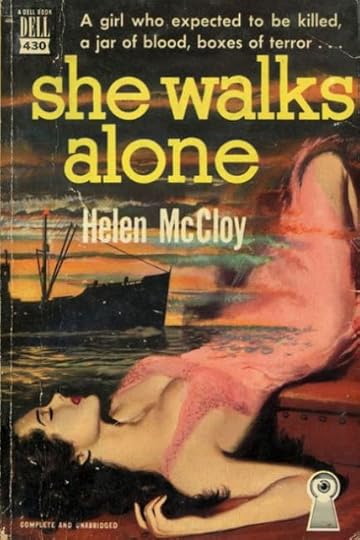
What could make the dangers even more compelling? Why, a snake, of course.


Published on May 21, 2017 16:02
May 20, 2017
MEANWHILE
In another country, England, London, the Barbican, a simpler approach applies. And only to one pedestrian:
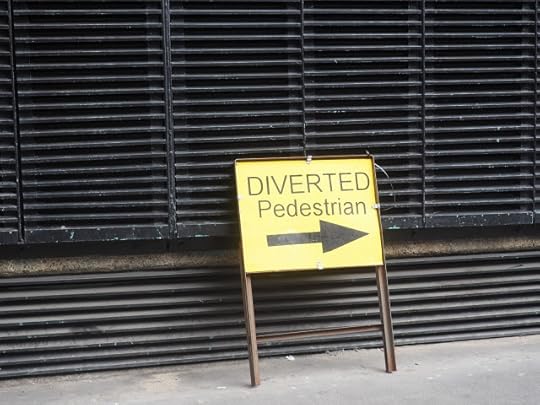



Published on May 20, 2017 11:00
May 17, 2017
HAMMERING HOME THE MESSAGE
Published on May 17, 2017 17:07
May 16, 2017
FIRE WALKING
Last weekend I went for a walk in the Big Morongo Canyon Preserve, a couple of hours from Los Angeles, 25,000 plus acres of desert, though because of snowmelt and underground water parts of it are marsh, wetland, and riparian forest. It’s not far from Joshua Tree National Park, but Morongo receives a couple of million fewer visitors per year, which some of us think is a definite advantage.
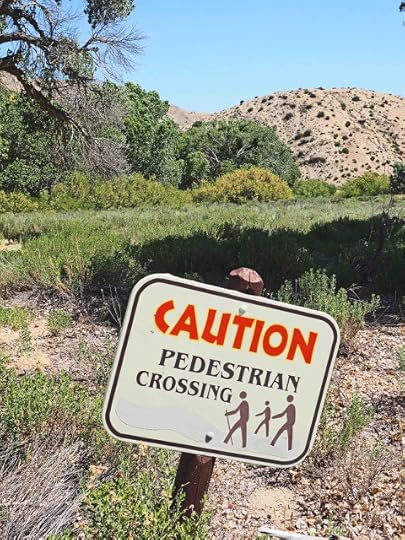
I’d been there once before, and if you’d asked me when that was, I’d have said just a few years back, but a little research reveals that it was over a decade ago in 2016.
At the time I was a great desert enthusiast but a bit new to the game (I’d only recently moved to California) and in many ways I was naïve about the desert. I found the Morongo Preserve a bit tame and well-groomed with its designated trails and its boardwalks across the marshland. Back then I wanted every walk in the desert to be some great, wild, cosmic expedition of self-discovery. I’ve lightened up a lot since then.

2006 was an “interesting” year to visit. In June 2005 there had been a serious fire that started in a house in the unincorporated community of Morongo Valley. It’s known as the Paradise Fire because the house was in Paradise Avenue; the fire destroyed half a dozen homes and 6,000 acres of the Preserve.At its worst it looked like this (photo from Friends of Morongo):

Volunteers rallied round and some trails reopened within a few weeks of the fire, though it wasn’t till March 2006 that all of the trails were open again. And in October of that year, I sauntered along.

As you see in the pictures I took at the time (above and below), there was still plenty of evidence of the blaze, and some startling contrasts between the burned, blackened trees and the new growth. According to the Preserve’s website there were signs of growth within a week of the fire being extinguished.

Big Morongo Canyon Preserve is one of those places where they let nature take its course, as far as they can, and so the old burned trees are still there today, sometimes with exuberant new growth all around them, and the effect is even more startling than it was over ten years ago; like this Giacometti-style burned tree:

And here – and I didn’t realize I’d photographed it before until I got home and checked the archive – are two photographs of the same dead tree taken a decade or so apart. The tree is still dead, of course, it’s lost some of its extremities, but it’s still standing, looking resolute and noble (and anthropomorphic), right next to the boardwalk where hikers pass all the time, You can pick your own metaphors out of that one.
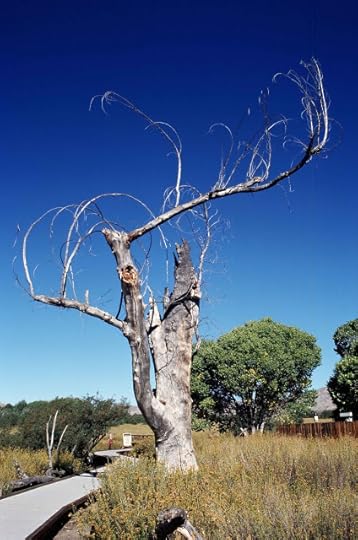 Then
Then
 Now
Now


I’d been there once before, and if you’d asked me when that was, I’d have said just a few years back, but a little research reveals that it was over a decade ago in 2016.
At the time I was a great desert enthusiast but a bit new to the game (I’d only recently moved to California) and in many ways I was naïve about the desert. I found the Morongo Preserve a bit tame and well-groomed with its designated trails and its boardwalks across the marshland. Back then I wanted every walk in the desert to be some great, wild, cosmic expedition of self-discovery. I’ve lightened up a lot since then.

2006 was an “interesting” year to visit. In June 2005 there had been a serious fire that started in a house in the unincorporated community of Morongo Valley. It’s known as the Paradise Fire because the house was in Paradise Avenue; the fire destroyed half a dozen homes and 6,000 acres of the Preserve.At its worst it looked like this (photo from Friends of Morongo):

Volunteers rallied round and some trails reopened within a few weeks of the fire, though it wasn’t till March 2006 that all of the trails were open again. And in October of that year, I sauntered along.

As you see in the pictures I took at the time (above and below), there was still plenty of evidence of the blaze, and some startling contrasts between the burned, blackened trees and the new growth. According to the Preserve’s website there were signs of growth within a week of the fire being extinguished.

Big Morongo Canyon Preserve is one of those places where they let nature take its course, as far as they can, and so the old burned trees are still there today, sometimes with exuberant new growth all around them, and the effect is even more startling than it was over ten years ago; like this Giacometti-style burned tree:

And here – and I didn’t realize I’d photographed it before until I got home and checked the archive – are two photographs of the same dead tree taken a decade or so apart. The tree is still dead, of course, it’s lost some of its extremities, but it’s still standing, looking resolute and noble (and anthropomorphic), right next to the boardwalk where hikers pass all the time, You can pick your own metaphors out of that one.
 Then
Then Now
Now
Published on May 16, 2017 18:01
May 10, 2017
LONG DAY’S JOURNEY INTO ICELAND
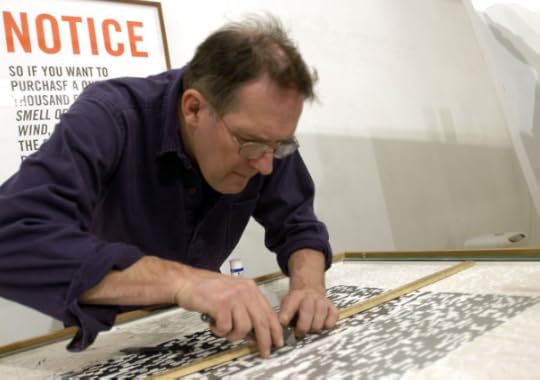
My Richard Long post brought up a couple of things. First, Steve Duffy reminds me (and I probably shouldn’t have needed reminding) of Bill Drummond’s Iceland/Richard Long adventures. If the story is to be believed, and with Bill Drummond it may not be, in 1970 he and his sister tried, but failed, to walk the length of Iceland, North to South. I’m not sure exactly what route they intended to take, but whichever way they went would have been 550 plus kilometers, and he was only 17 years old at the time, so failure was perhaps to be expected.

In 1970, Richard Long would have been 25 years old and had already done a certain amount of walking and art making – A Line Made By Walking is from 1967, but he wasn’t a household word, even the artiest of households. A Line Made By Walking looks like this:
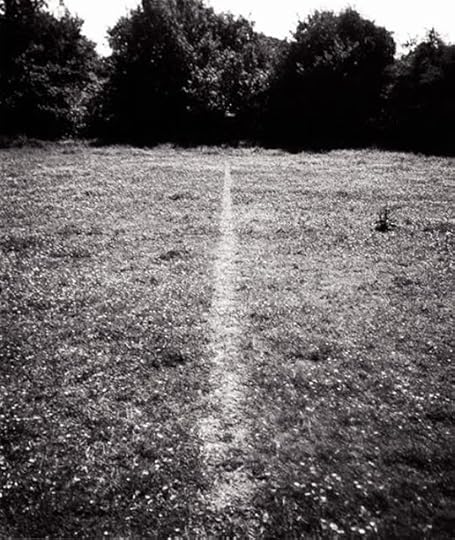
In 1994 Long successfully walked the length of Iceland, taking the same route that Drummond had attempted: Drummond is the source of that bit of information, and I assume Long had never heard of Drummond or his failed walking expedition.
During that Icelandic walk, and afterwards, Long created works inspired by the trip, including a photography and text piece called A Smell Of Sulphur In The Wind. It looks (or I suppose looked – since we have to use the past tense) like this:
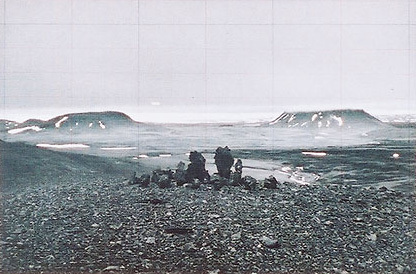
In 1995 Drummond bought the work for $20,000 (the price was in dollars since that’s the international art currency), but three 3 years later he’d gone off it, so he tried to sell it for what he’d paid – and couldn’t find a buyer. Well, there is such a thing as a gallery mark-up.
Ever the provocateur, in 2001 when he published and publicized his book How To Be An Artist, Drummond tried to sell the work again, this time by cutting it up into 20,000 separate numbered segments (each one approximately 10mm x 4mm) and selling them for $1 each. You can still buy them for that price at Drummond live events, or you can buy them online, via a third party, for five quid a time, the extra money covering “administration and registration.”

Once the last segment’s been sold, Drummond will supposedly take the $20,000, attempt the walk again and (assuming he succeeds, at least in part) he’ll bury the money in the center of the stone circle depicted in the Richard Long photograph, again assuming it’s still there.
I’m not sure this Bill Drummond project constitutes great art but it does sound like fun, a bit of a lark, and larkishness is in pretty short supply in the art world. Long is apparently deeply unamused by Drummond slicing up his work.
I wonder how Long feels about Carey Young who is reworking or reinterpreting (or something) his art in what strike me as some fairly uninteresting ways One piece is titled Body Techniques (after A Line in Ireland, Richard Long, 1974), from 2007. It looks like this:

Richard Long’s A Line in Ireland looks like this:

Would you like to hear what it says on Young’s website about her piece? Well of course you would. “Body Techniques (2007) is a series of eight photographs that considers the interrelationships between art and globalized commerce. The title of the series refers to a phrase originally coined by Marcel Mauss and developed by Pierre Bourdieu as habitus, which describes how an operational context or behavior can be affected by institutions or ideologies.” It’s a striking photograph - she’s in the United Arab Emirates apparently – and I always approve of wearing a suit in the desert, and it’s not hard to “get” the work - Long’s Irish rocks are “natural” while the path Young’s navigating consists of “manmade” discarded concrete. But you know, where’s the effort, where’s the walking?
There’s also Young’s Lines Made by Walking, a 2003, a looped slide projection sequence. Some of it looks like this:


Again her website describes it in ways I couldn’t possibly manage. “The viewer sees Carey Young, dressed in a suit, walking backwards and forwards in a crowd of commuters. … This action is repeated this (sic) until we realize that her repeated walking appears, in fact, to be ‘inscribing’ a line in the crowd. The artist appears to be restaging works by the Situationists as much as Richard Long, particularly his ‘A Line Made by Walking’ much as her activity can also be read as that of a the clockwork toy or caged animal pacing in captivity. She appears as if displaced, or within a different temporal continuum: the artist appears to be repeating the workers’ daily journey but at a faster speed. Her struggles to create a space within the crowd could be seen as a deadpan parallel for artistic ‘struggle’. The artwork appears balanced between two states, as confined as the daily monotony of the commuters’ journey and as some kind of free act hidden within monotony, but equally within its own modes of institutionalization.”
Deadpan indeed. God it must be awful to be a contemporary visual artist. Part of the gig involves describing, or having other people describe, what you do in language so inert, so exhausted, so pretentious and hollow, that it’s rendered meaningless. It seems to me that a robust sense of humor, a sense of the absurd, a lack of pomposity, is quite handy when you’re making art. Bill Drummond has those qualities in spades. Those same qualities also come in no less when you’re walking, if you ask me.
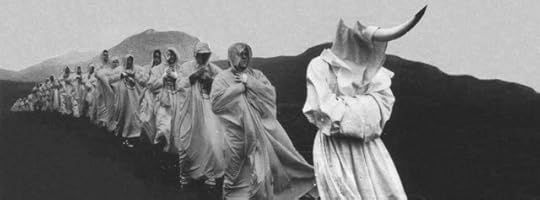

Published on May 10, 2017 12:15
May 6, 2017
RUBICON BEACH
Yep, you're gonna need a Jeep Rubicon (or two) when
drifting through the mean streets of Beverly Hills:


drifting through the mean streets of Beverly Hills:


Published on May 06, 2017 11:37
May 2, 2017
A SHORT LONG WALK
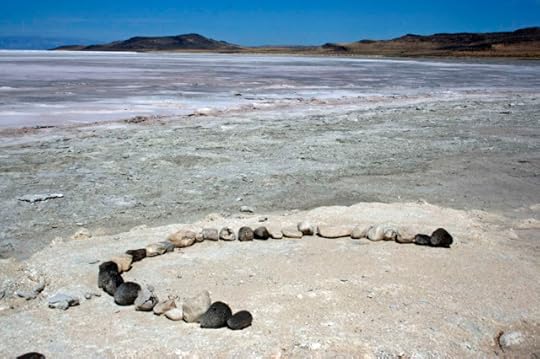
Regular readers will know that I’m a big fan of Richard Long - walker, artist, sometime walking artists, sometime land artist, sometime sculptor.
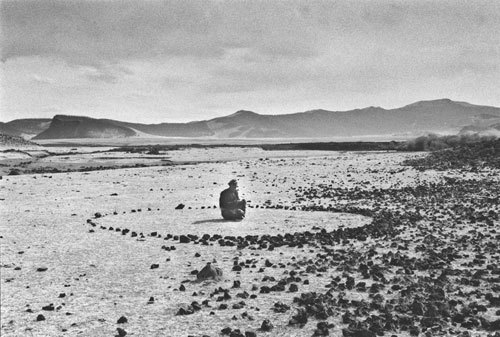
Some of his best work – and his best walks - involve “interventions” in the landscapes. Sometimes these might involve stamping out an “intaglio” on the ground, or he might move rocks into patterns.
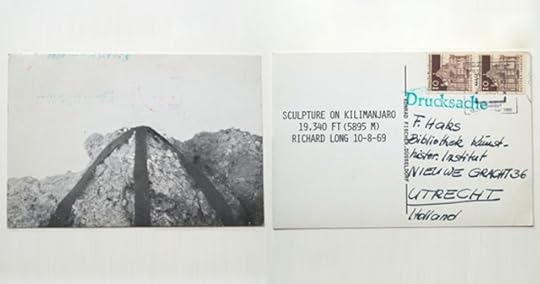
Very early in his career he went up Kilimanjaro, and made a kind of sculpture there. “I was very proud of the fact I had probably made the highest sculpture in the world, ” he said in a recent interview with the Guardian.
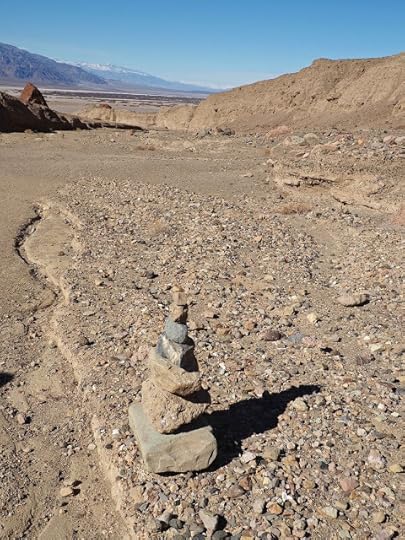
If I’m walking in the desert or some isolated place I often see that somebody has rearranged rocks, and I always say to myself “Maybe Richard Long was here,” but I never really think he was. And occasionally I myself have been known to rearrange rocks – in which case it’s definitely not a Richard Long, but I suppose it might be “School of Long.”
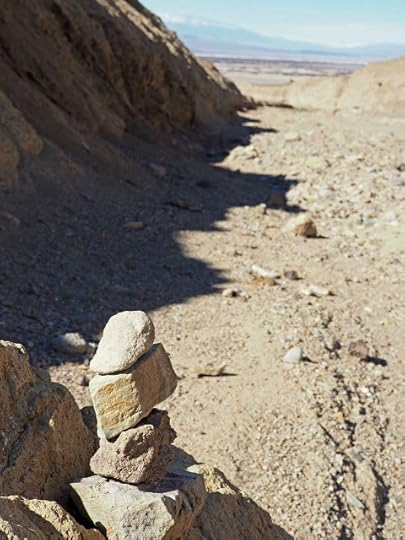
Long’s work also sometimes involves transporting pieces of rock or slate from natural settings or quarries, and then arranging them in art galleries or in outdoor sculpture parks. An exhibition of these kind of sculptures titled Land and Sky: Richard Long at Houghton just opened at Houghton Hall, near Fakenham, in Norfolk, England.
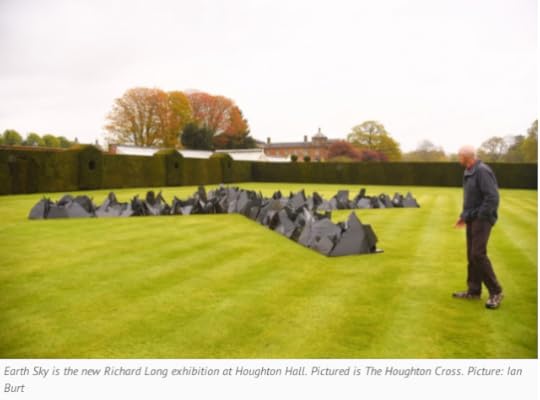
Part of the coverage included that article in the Guardian which quotes Long as saying that he’s walked every piece of Dartmoor, but avoids pilgrim routes and old ways. “I made a conscious decision that there’s so many ways to walk in new ways or original ways. I was quite proud of the fact that no one has walked across Dartmoor in a straight line before.” He’s referring to works like these:
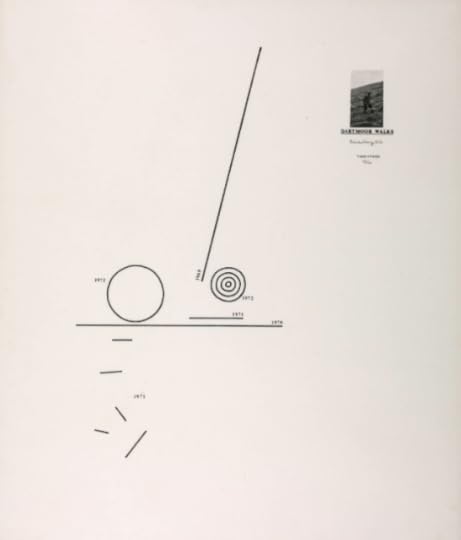
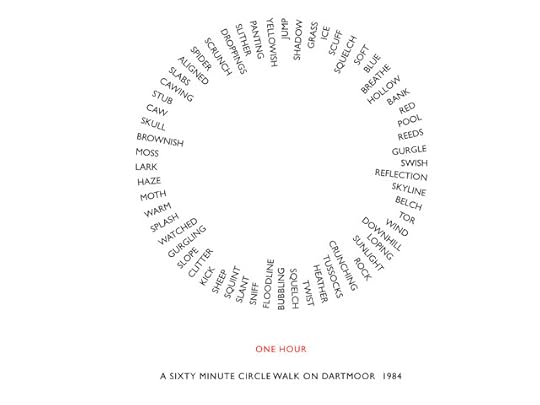
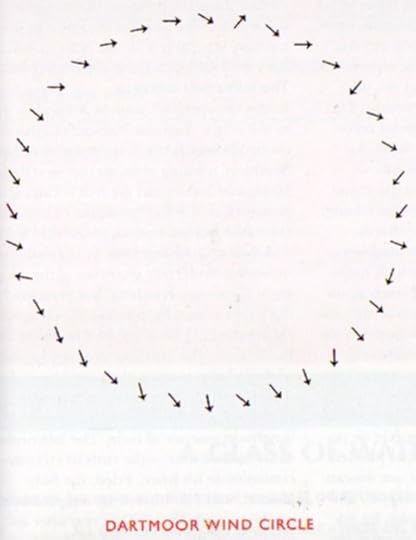
I have definitely walked on Dartmoor – a long time ago, not sure I’d even heard of Richard Long at the time. I definitely didn’t walk in a straight line and if I walked on pilgrim routes I certainly didn’t know about it.
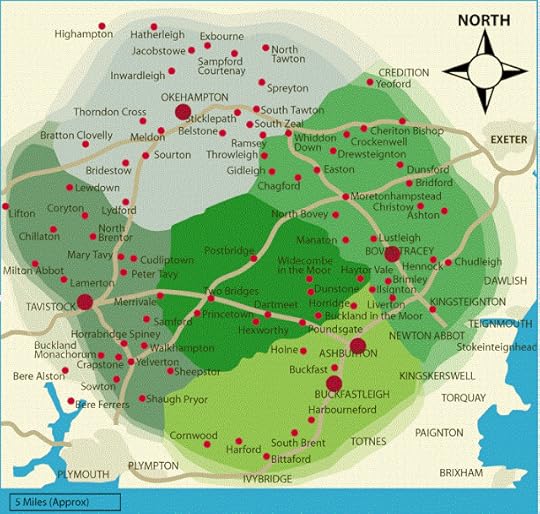
Long says, “Ideas can last forever … I’m one of the artists who realized a journey – from a straight path in the grass to a 1,000-mile walk – could be a work of art.”
Of course It’s in the nature of art that it changes the way you see the world, so when you’ve got Richard Long in your head and you find yourself, as I did the other day, walking in Los Angeles along Wilshire Boulevard, past a building that houses a Wells Fargo Bank and a slightly distant outpost of Cedars Sinai hospital, I was amazed to find this sea of rough but carefully arranged slabs of red rock.
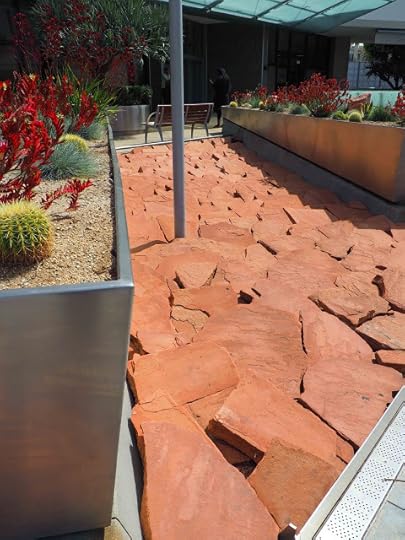
I’m as sure as I can be that these are not “real” Richard Longs, but who’s to say that the landscape architect wasn’t familiar with his works? Maybe he or she too belonged to the School of Long.

Published on May 02, 2017 06:49
April 29, 2017
WALKING WITH WOMEN WALKERS
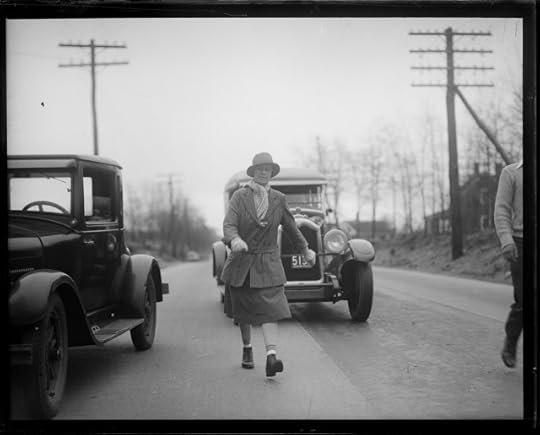 Eleanora Sears
Eleanora SearsTwo books have recently come across the transom, one relatively new, one comparatively old. The first is Lauren Elkins’ Flâneuse: Women Walk the City in Paris, New York, Tokyo, Venice, and London (2016) and The Wonderful World of Walking by Bill Gale (1979).
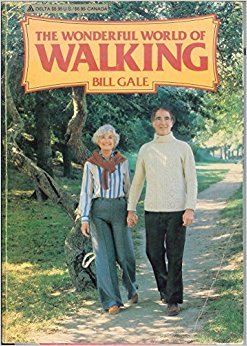
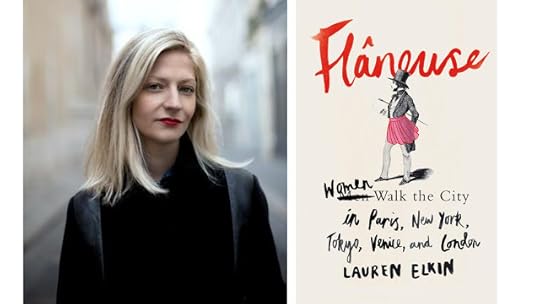
I belatedly bought myself a copy of Elkin’s Flâneuse since it’s become obvious that nobody is going to send me a freebie – despite my appearance in the bibliography. No room there for Iain Sinclair though – ha! (You realize that’s an ironic “ha!” right?)
I’d been reading the reviews of Flâneuse - and it’s not that I trust reviewers whether they’re praising or condemning a book - but there was something a bit off about many of them. They were incredibly “supportive.” They indicated that the book was a “good thing” but very few of them really showed actual enthusiasm or affection for the book. “Well researched and larded with examples,” said Philippa Stockley in the Evening Standard. Diane Johnson’s review in the New York Times seemed especially dutiful, “If Elkin’s capsule biographies can occasionally seem a bit potted, they are never uninteresting.”
For my own part I wanted the book to be good – I like walking, I like women, I like women who walk, and I want women to be able to walk wherever they want without being abused or threatened, and all the rest. Hell, some of my best friends are flâneuses, and yet I had my doubts. These doubts were not entirely assuaged by reading the book.

For one thing, there’s a chunk about Virginia Woolf and Bloomsbury. I can see why there has to be, but the truth is that I don’t love Virginia Woolf, men don’t, they just don’t. I think it’s mostly because her male characters always seem so feeble and awful. Wouldn’t you throw yourself out of a window rather than be in the same room as Mr. Ramsey of To The Lighthouse fame. And as for Augustus Carmichael, the visiting poet …
And I know people make claims for Mrs. Dalloway as a great psychogeographic novel, but am I right to be doubtful about this when John Sutherland has made a pretty convincing case that Mrs. Dalloway actually completes her London drift in a taxi?
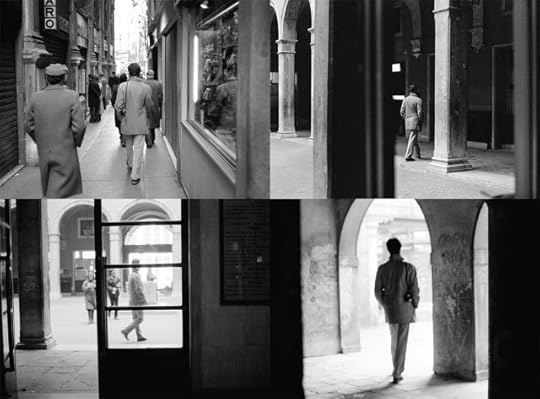
Flâneuse also contains a chunk about Sophie Calle who I think is a pretentious phoney, especially that nonsense in Suite Vénitienne of her “following” a man all the way to Venice, while being “followed” by a photographer: but I know other views are possible. “These are not souvenir snapshots of a presence, but rather shots of an absence, the absence of the followed, that of the follower, and that of their reciprocal absence,” says Jean Baudrillard, not wishing to be outdone in the pretentious phoney stakes.
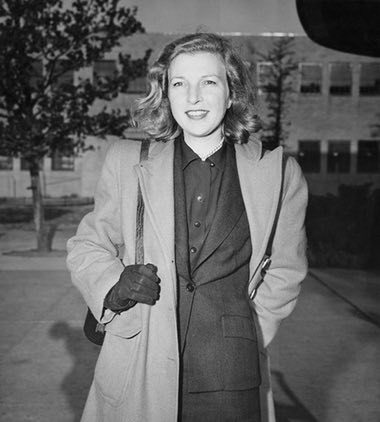
None of this can be blamed on Lauren Elkin of course. We’re all on much safer ground with Martha Gellhorn, especially the articles she wrote for Colliers magazine about the civil war in Spain. “No matter how often you do it, it is surprising just to walk to war from your own bedroom where you have been reading a detective story or a life of Byron, or listening to the phonograph, or chatting with friends.”
I also very much liked Elkin’s description of living in Tokyo, where she didn’t have the very best time. “What bothered me most was the certainty I felt that there was a great city out there full of places I wanted to discover, but I didn’t know where to look for them. I didn’t know what there was out there. I didn’t know where to go, where to walk.” It’s a feeling many of us have had, in places much less alien than Tokyo.

I wish somebody had recommended to Elkin “Flesh and The Mirror” a short story by Angela Carter set in Tokyo, "I was crying bitterly as I walked under the artificial cherry blossoms with which they decorate the lamp standards from April to September. They do that so the pleasure quarters will have the look of a continuous carnival, no matter what ripples of agitation disturb the never-ceasing, endlessly circulating, quiet, gentle, melancholy crowds who throng the wet web of alleys under a false ceiling of umbrellas.” I’m not saying this would have cheered Elkin up much, but it’s a good story.
I assume, on no absolute basis, that Angela Carter was quite the flaneuse when she was in Tokyo, and also in London, and indeed in Sheffield.
The Wonderful World of Walking is (let’s say) a text of its time. A chapter titled “Walking and Today’s Woman” runs to all of two pages. But the book does contain accounts of a few walking women, none of them exactly household names.
Minta Beach walked from New York to Chicago in 1912. Minnie Hill Wood walked from Washington to San Francisco in 1916. Eleanora Sears, an all round sportswoman, set a speed hiking record in 1925, walking the 74 miles between Newport, Rhode Island and Boston in 17 hours. I imagine none of these women considered herself a flâneuse, and they surely didn’t consider themselves artists, although Minta Beach did publish a book about her walk.
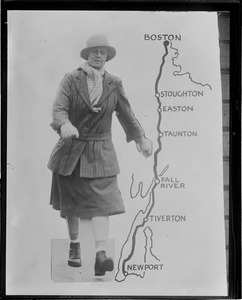
I did have vague memories of a later walker that Gale writes about: Dr. Barbara Moore. I just about remember her appearing from time to time on TV when I was growing up in England. She did a number of long walks, the one I remember best was from Land’s End to John O’Groats – 1200 miles in 23 days, I know now, so that’s over 50 miles per day. I discover that was in 1960, so no wonder my memories are vague, and apparently that same year she walked from San Francisco to New York, 3,387-mile according to Gale, so a fairly indirect route, and in 86-days, so a fraction under 40 miles a day which seems barely imaginable.
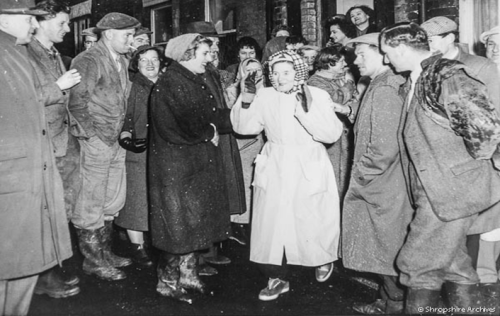
Still there was much I didn’t know about her. For one thing, although she was British by marriage, she was born in Russia in 1903, migrated to England in 1939, and had a career as an engineer. So she’d have been in her mid to late 50s when she was doing the walks that made her famous.
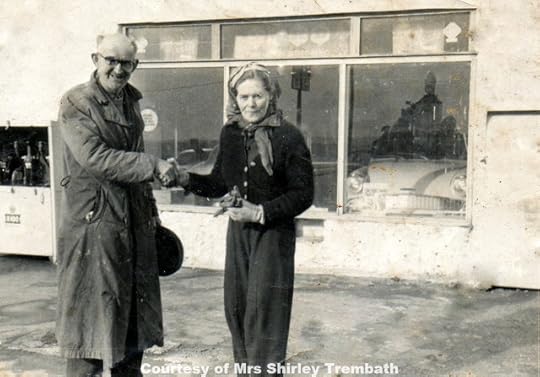 I also didn’t know that she was a nutritional crank, a vegetarian, but sometimes also a breatharian, believing people could survive without food altogether. According to Bill Gale, “A large glass of grass juice was her favorite six course meal in one.” In various interviews she said that people could live to be 150 or 200 years old, and claimed to have cured herself of leukemia, using a special diet.
I also didn’t know that she was a nutritional crank, a vegetarian, but sometimes also a breatharian, believing people could survive without food altogether. According to Bill Gale, “A large glass of grass juice was her favorite six course meal in one.” In various interviews she said that people could live to be 150 or 200 years old, and claimed to have cured herself of leukemia, using a special diet. 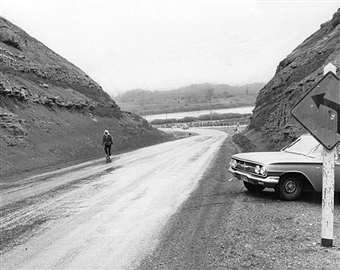
Turns out she spent the last years of her life fighting legal battles over the lab she was planning to build next to her house in Frimley, in Surrey, and she was eventually jailed for contempt of court. She died in a St Giles Hospital, London in 1977, somewhat earlier than she had anticipated.

Published on April 29, 2017 07:12
Geoff Nicholson's Blog
- Geoff Nicholson's profile
- 55 followers
Geoff Nicholson isn't a Goodreads Author
(yet),
but they
do have a blog,
so here are some recent posts imported from
their feed.


